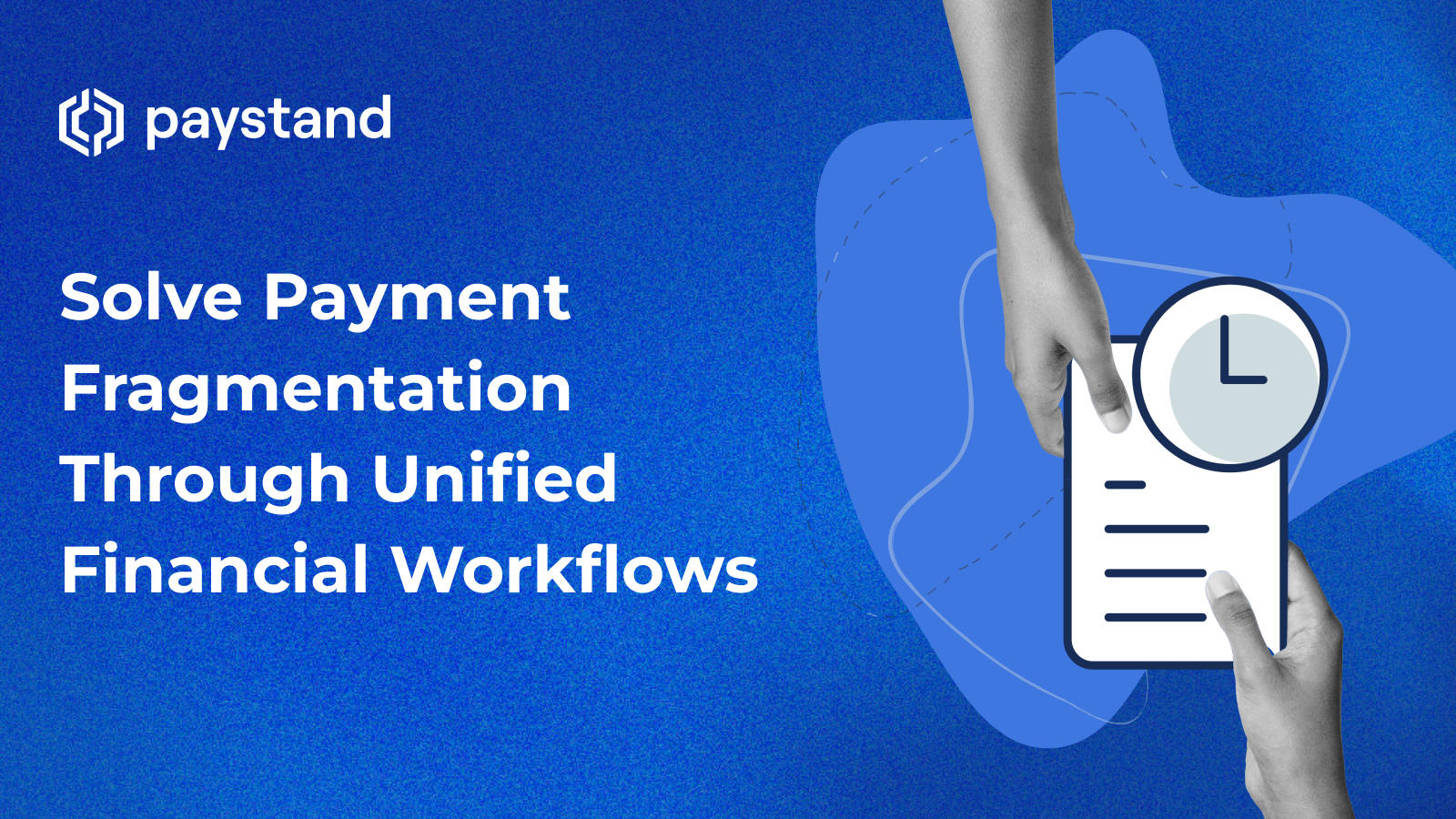Solve Payment Fragmentation Through Unified Financial Workflows

Table of Contents
- What Is Payment Fragmentation?
- Industries Most Affected by Payment Fragmentation
- How Payment Fragmentation Impacts Businesses
- How Paystand Solves Payment Fragmentation
- The Future of B2B Payments: A Unified Network Approach
Key Takeaways
- Payment fragmentation occurs when businesses manage multiple, disconnected payment systems.
- Industries like healthcare, manufacturing, supply chain, and SaaS are especially affected.
- Fragmented systems slow down reconciliation, increase error rates, and hinder cash flow.
- Paystand offers a blockchain-based solution that unifies payments and automates workflows.
- The future of B2B payments lies in a connected, zero-fee network that enables seamless financial operations.
What Is Payment Fragmentation?
Payment fragmentation refers to the use of multiple, disconnected systems and processes for sending, receiving, and reconciling payments within a business. Rather than flowing through a centralized platform, payments are scattered across bank portals, payment gateways, spreadsheets, paper checks, and manual processes.
This lack of integration makes visibility, control, and scalability difficult, especially as organizations grow or expand into new markets.
Industries Most Affected by Payment Fragmentation
1. Healthcare
Hospitals and providers deal with a mix of patient payments, insurance reimbursements, and vendor settlements—all through different portals and timelines. Fragmentation increases the administrative burden and slows down cash flow.
2. Manufacturing & Supply Chain
These businesses rely on complex vendor networks, import/export logistics, and high transaction volumes. Fragmented payments create bottlenecks and make it harder to maintain strong supplier relationships or predict cash positions.
3. SaaS & Subscription Businesses
Recurring billing adds another layer of complexity. Without automation and integration, revenue recognition, dunning, and reconciliation become resource-intensive and error-prone.
How Payment Fragmentation Impacts Businesses
- Slower time-to-cash: Payments take longer to settle and clear across siloed systems.
- Manual reconciliation headaches: Finance teams spend hours matching transactions to invoices.
- Higher costs: Multiple payment processors and banks mean more fees and less negotiating power.
- Limited visibility: Disconnected data prevents real-time payment insights into cash flow and performance.
- Risk of error and fraud: More manual steps = more opportunities for mistakes or security breaches.
How Paystand Solves Payment Fragmentation
Paystand eliminates fragmented workflows by creating a single source of truth for B2B digital payments. Here’s how:
- Unified Payment Network: Accept paperless payments through one blockchain-enabled platform—ACH, wire, card, and even zero-fee bank-to-bank.
- Automated Reconciliation: Intelligent tools match payments to invoices automatically, reducing human error and manual effort.
- Smart Controls: Fine-tune who pays what (e.g., surcharges, tariffs, convenience fees) based on your rules.
- Subscription & AR Automation: Easily manage financials like recurring billing, revenue recognition, and follow-ups—all in one system.
- Real-Time Visibility: Get instant insights into payment status, payer behavior, and cash flow.
With Paystand, B2B companies eliminate the friction of siloed payments and unlock end-to-end financial automation.
The Future of B2B Payments: A Unified Network Approach
The next evolution of B2B payments is not just digital transformation—it’s networked automation. A unified B2B payment network empowers businesses to:
- Transact without excessive fees
- Operate with full transparency and real-time data
- Streamline finance operations across departments and geographies
- Influence payer behavior to adopt more cost-efficient methods
- Future-proof finance teams with scalable infrastructure
The businesses that thrive won’t be those with the most payment options—they’ll be the ones with the most intelligent, unified workflows.
Payment fragmentation is a silent cost killer. But it doesn’t have to be the status quo. By shifting to a unified, automated financial system like Paystand’s, B2B companies can reclaim control, reduce costs, and prepare for a more connected financial future.
Learn how BIIA Insurance streamlined its payments to save time and fees.






%20(1)%20(1).jpg?width=100&height=100&name=IMG_3752%20(1)%20(1)%20(1).jpg)